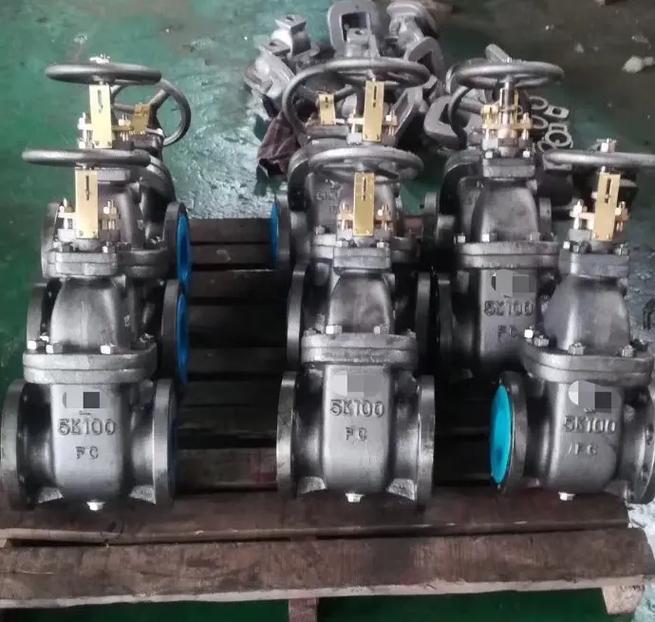|
Analysis of Marine Engineering Requirements: How Do Marine Valves Address the Challenges of Deep-sea Oil and Gas DevelopmentThe exploration and development of deep-sea oil and gas resources represent one of the most technically demanding frontiers in marine engineering. As global energy demands escalate and shallow-water reserves dwindle, the industry is increasingly reliant on advanced technologies to unlock subsea resources located at depths exceeding 1,500 meters. Marine valves, though often overlooked, play a critical role in addressing the multifaceted challenges of deep-sea operations, including extreme pressures, corrosion, and the need for reliable remote control systems. This article explores how marine valves are engineered to meet these demands and sustain the future of offshore energy production.
The Technical Demands of Deep-Sea Oil and Gas Development Deep-sea environments impose unique engineering challenges that escalate with water depth. At 3,000 meters below sea level, hydrostatic pressure exceeds 300 bar, while temperatures hover near freezing, and saltwater corrosion accelerates material degradation. These conditions necessitate specialized equipment capable of withstanding: Extreme Pressure and Temperature Fluctuations: Subsea valves must operate flawlessly under pressures equivalent to 3,000 kilograms per square centimeter while enduring abrupt temperature changes during production cycles. Corrosive Seawater Exposure: Continuous contact with seawater, coupled with dissolved gases and particulates, demands corrosion-resistant materials and protective coatings. Remote Operability: Unlike shallow-water operations, deep-sea systems require fully automated or remotely operated valve systems due to the impracticality of manual intervention. Flow Assurance: Maintaining consistent hydrocarbon flow despite wax deposition, hydrate formation, and erosion from multiphase mixtures of oil, gas, and water. Innovations in Marine Valve Technology To overcome these challenges, marine valve manufacturers have pioneered several technological advancements: 1. High-Pressure and Cryogenic-Resistant Designs Modern subsea valves utilize duplex stainless steel, super duplex alloys, and titanium grades 5/6 to resist deformation under extreme pressures. For example, the HYSY-981 deepwater drilling rig, operational in the South China Sea, employs valves rated for 3,000-meter water depths and 10,000-psi operating pressures. Innovations in metallurgy, such as nickel-copper alloys (e.g., Monel 400), have extended valve life in low-temperature environments by preventing embrittlement. 2. Anti-Corrosion and Anti-Fouling Coatings Advanced polymer coatings, such as fusion-bonded epoxy (FBE) and polyurethane, are applied to valve bodies to mitigate biofouling and galvanic corrosion. For instance, China’s CNOOC has deployed valves with epoxy coatings in the Lingshui 17-2 gas field, reducing maintenance cycles by 40% compared to uncoated equivalents. 3. Actuation and Control Systems Deep-sea valves integrate hydraulic, electric, or electro-hydraulic actuators paired with subsea control modules (SCMs) for remote operation. The Perdido Facility in the Gulf of Mexico, operating at 2,450 meters, uses all-electric valves with fiber-optic communication, enabling real-time adjustments via umbilical cables. This system reduces response times from hours to minutes, critical for emergency shutdowns. 4. Flow Assurance Technologies To combat wax and hydrate formation, valves incorporate heated jackets or chemical injection ports. For example, Shell’s Stones project in the U.S. Gulf of Mexico employs valves with integrated methanol injection systems, maintaining flow rates in 2,900-meter depths despite 3°C seawater temperatures. Case Study: The “Deepwater Frontier” Project The “Deepwater Frontier” project in the Eastern Mediterranean exemplifies these innovations. Operating at 2,200 meters, the facility uses: Subsea Choke Valves: Equipped with diamond-like carbon (DLC) coatings to reduce friction and erosion from sand-laden production streams. Fail-Safe Actuators: Spring-return hydraulic actuators ensure valves close automatically during power loss, preventing blowouts. Modular Design: Valve assemblies are pre-tested in hyperbaric chambers simulating 300 bar pressure, reducing on-site commissioning time by 60%. These features have achieved 99.8% uptime since 2021, outperforming the industry average of 95%. |

